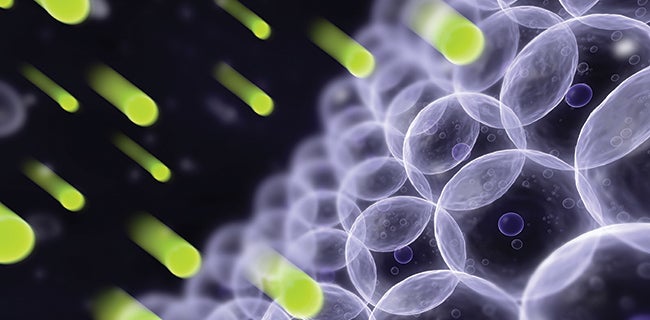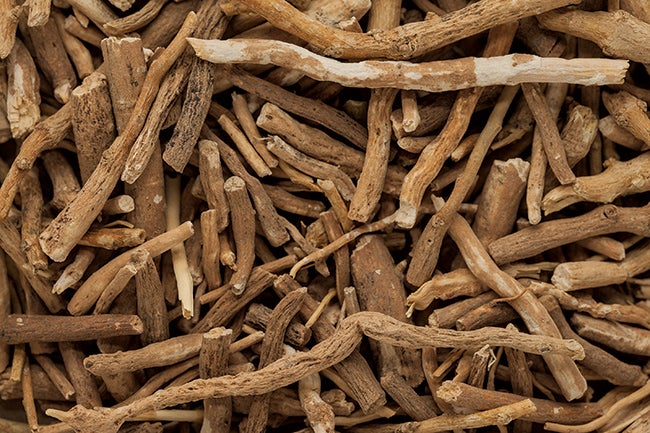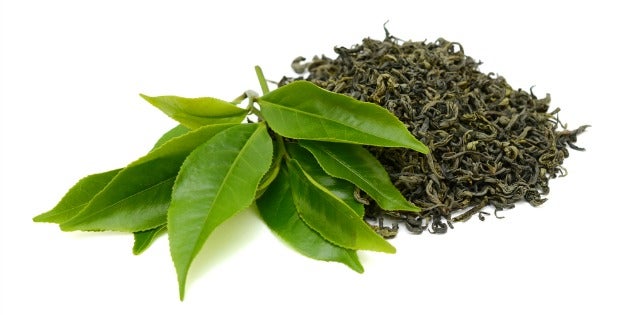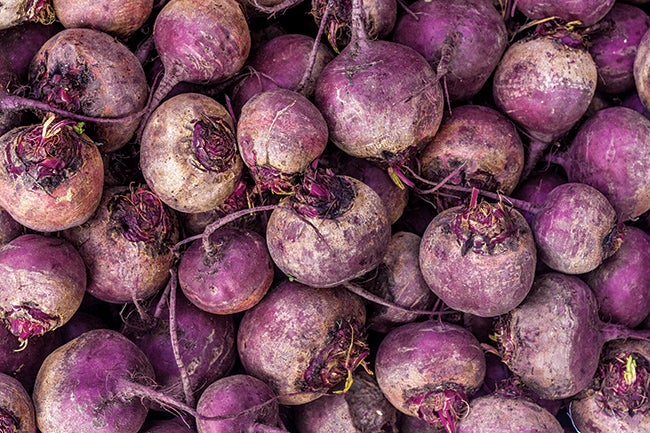Heading out the door? Read this article on the new Outside+ app available now on iOS devices for members! Download the app.

Free radicals are highly reactive atoms that, when left unchecked, promote oxidative stress — a process that causes damage and death to cells, DNA and other molecules in the body. In fact, oxidative stress is a fundamental mechanism driving premature aging and disease.
Environmental stressors such as sun exposure and pollution promote free-radical production, and, believe it or not, exercise is another (due to increased metabolism). Although exercise promotes free-radical production, some level of training-induced oxidative stress is necessary to promote training adaptations, including upregulation of the body’s antioxidant defense system.
As such, recent studies now suggest that haphazard approaches to antioxidant supplementation may impede training adaptations.
What Are Antioxidants?
Antioxidants are molecules (produced by the body and taken in the diet) that bind to free radicals, reducing the damage to other molecules, such as DNA. Once antioxidants, which can be enzymatic or non-enzymatic, bind to free radicals they are no longer free to bind with and damage parts of your cells. In a perfect world, there should always be a balance between oxidative stress and antioxidant levels in the body; however, any imbalances in favor of oxidants (due to environmental stressors such as smoke, inadequate diet or heavy training) can lead to a state of elevated oxidative stress.
In humans, an imbalance between reactive oxygen species production and endogenous antioxidants is involved in the generation/progression of more than a hundred pathologic conditions.
Interestingly, although endurance training and weight training independently promote the formation of reactive oxygen species (a type of free radical) and oxidative stress, the body adapts by upregulating its enzymatic antioxidant defense during exercise recovery. This adaptation improves the efficiency of the enzymatic antioxidant defense system and protects cells against oxidative damage during subsequent exercise bouts.
It must be noted that low levels of ROS improve muscle force and adaptive responses to training, so you don’t want to completely eliminate them by superdosing antioxidants prior to training. On the other hand, high levels of ROS cause strength loss and contribute to muscular fatigue during prolonged and intense exercise.
So, in a nutshell, trained muscle requires an optimal amount of oxidative stress to maximize gains in exercise performance, but ROS overproduction can to lead to cellular dysfunction and DNA damage, ultimately resulting in decreased muscle performance and muscle damage.
Current research suggests that antioxidant supplements are only beneficial to athletes when the body’s antioxidant levels are not keeping up with the demands of oxidative stress. If you are wondering what your status is, consider three questions:
1. Do you follow a diet that restricts fruit and vegetables (e.g., a ketogenic diet)?
Fruits and leafy-green vegetables contain an abundance of antioxidant nutrients. If you limit these free-radical-scavenging powerhouses, then you may be subjected to damaging oxidative stress.
2. Do you compete or train multiple times per day?
Many athletes compete or train intensely multiple times in one day. Multiples significantly increase the body’s free-radical load and may tax its antioxidant defenses.
3. Are you above the age of 40 and train regularly and intensely?
As we age, our ability to deal with heightened oxidative stress decreases. A study published in the Journal of Diabetes and Metabolic Disorders suggests that this is, at least partly, due to decreased levels of endogenous antioxidants directly related to aging.
If you answered yes to any of the three questions above, then you are a likely candidate for antioxidant supplementation. Here are three key supplements that help boost the body’s antioxidant capacity and, when combined with exercise, have been proven to promote fitness and health. You may wonder why vitamins C and E are not included in the list: This is simply because people who take a multivitamin or a multi formulated for athletes tend not to be deficient in these two vitamins and megadosing vitamins C and E before training has been shown to (marginally) blunt gains.

Ashwagandha
What is it?
Withania somnifera, commonly known as ashwagandha or Indian ginseng, is a perennial flowering shrub that is commonly used in traditional Indian medicine (Ayurveda). In Sanskrit, ashwagandha means “the smell of a horse,” as it is believed to produce vigor and strength in those who take it. In scientific terms, ashwagandha is known as an adaptogen, which means it increases the body’s ability to handle stress and fatigue by maintaining hormonal balance.
What does the research say?
In terms of strength training, recent research published in the Journal of the International Society of Sports Nutrition reported that those who took ashwagandha root extract (300 milligrams, twice daily) while completing an 8-week resistance-training program, had greater increases in strength, muscularity, and fat loss compared to placebo. These results were (at least partially) due to a 15 percent increase in serum testosterone levels observed with ashwagandha treatment.
As well, a recent study evaluated the efficacy of ashwagandha root extract in enhancing cardiorespiratory endurance and improving quality of life in 50 healthy male/female athletic adults. In this study, cardiorespiratory endurance was assessed by measuring the oxygen consumption at peak physical exertion (VO2 max) during a 20-meter shuttle-run test. As well, QOL was assessed throughout the 12-week experimental period using the World Health Organization self-reported QOL questionnaire. At the end of the 12-week study, those who received ashwagandha benefitted with an approximately 6 percent increase in VO2 max during the 20-meter shuttle run test.
In contrast, those who received the placebo saw no change in VO2 max throughout the study. In terms of QOL, those who took ashwagandha had significant improvements in all areas tested including benefits to physical and psychological health, and social relationships.
How do you use it?
We recommend taking 300 milligrams of ashwagandha extract (standardized to 5 percent withanolides) upon waking and before bed.

Green-Tea Extract
What is it?
Green-tea extract is derived from the leaves of C. sinesis, the same species used for black tea. However, because green tea is nonfermented and nonoxidized it retains unique and beneficial components that are not available in black tea. GTE contains high concentrations of pharmacologically bioactive polyphenols including epigallocatechin, epicatechin, epicatechin gallate and epigallocatechin gallate. Although green tea has caffeine, GTE is caffeine-free and contains a standardized concentration of bioactive polyphenols, the most abundant being EGCG.
What does the research say?
Certainly you have heard of all the fat-burning, focus and health-promoting advantages of GTE, but did you know that it is also a unique antioxidant? We consider it unique because two recent studies (one published in the European Journal of Nutrition and the other in Nutrition) illustrate that taking GTE before training boosts the body’s antioxidant defenses without negatively affecting its adaptive responses to training.
How do you use it?
Take 500-1,000 milligrams of green-tea extract standardized for EGCG, two or three times per day. For best fat-burning effects, always take one dose 30 minutes prior to doing cardio and take with 100-200 milligrams of caffeine.

Beetroot Extract
What is it?
Beetroot extract is the isolated nutrients taken from the root vegetable Beta vulgaris rubra, aka red beetroot. You have likely heard of BRE and its high nitrate levels, which have been shown to boost nitric oxide in the body and promote increased blood flow to working muscles. What you may not know is that beetroot is rich in several other bioactive compounds that provide many other health and fitness benefits. Of note, BRE is a rich source of phytochemical antioxidant compounds, including ascorbic acid, carotenoids, phenolic acids and flavonoids.
What does the research say?
You have likely heard the recent hype surrounding BRE’s positive effects on health, blood pressure, and exercise performance — indeed, there is an abundance of research illustrating the benefits of taking BRE preworkout, from increasing muscular power to boosting aerobic efficiency. Most studies have focused on the benefits of BRE based on its ability to boost dietary nitrate levels and promote nitric oxide production. However, a recent study published in Applied Physiology, Nutrition, and Metabolism illustrated that the exercise performance benefits of beetroot go beyond its nitrate-boosting potential.
In fact, when researchers gave subjects either beetroot juice or sodium nitrate, they found that the beetroot juice supplement increased exercise performance more than the pure nitrate supplement. The authors concluded that the exercise performance benefits of BRE are likely due to the combination of increased dietary nitrate and the protective effects of BRE’s naturally occurring antioxidants on buffering oxidative stress and supporting nitric oxide production.
How do you use it?
We recommend taking 500-750 milligrams of high-nitrate standardized beetroot extract 30 to 60 minutes before training.